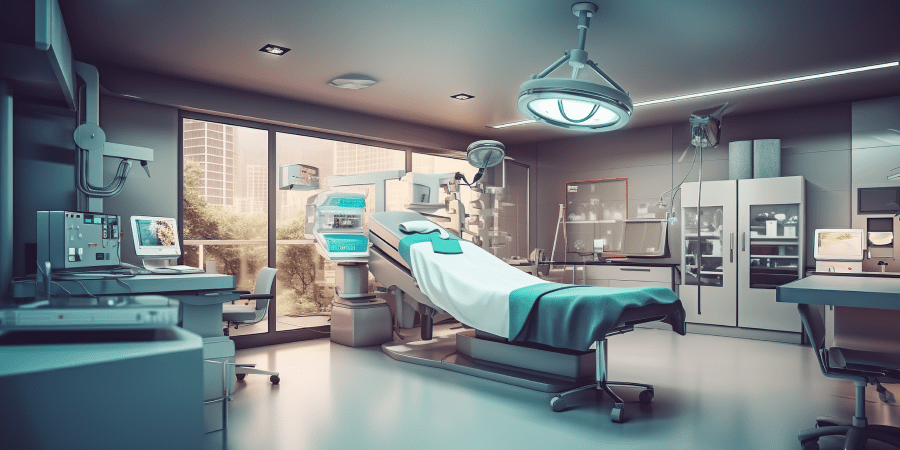In today’s world, we’re all looking for ways to be...
The atmosphere in hospitals can often feel stressful and overwhelming. Bright lights, busy hallways, and the constant noise from medical machines can make patients and their families anxious. This is where green spaces, like healing gardens, can help. These areas, filled with plants, flowers, and soothing nature sounds, offer a much-needed break from the hospital environment. Research shows that being around nature or even just looking at plants can lower stress, reduce blood pressure, and help patients recover faster. For those going through treatments or long hospital stays, having access to a quiet garden can greatly improve their well-being. These green spaces create a calm environment where patients, families, and hospital staff can relax and recharge.
In this blog, we’ll look at how adding green spaces to hospitals can positively impact patient experiences, support hospital staff, and create a more peaceful atmosphere. We’ll discuss different types of gardens, their benefits, and how they are changing the way hospitals are designed. By the end, you’ll see just how important these green areas can be in a hospital setting.
The Healing Power of Nature
The healing power of nature is a key part of how hospitals are designed. By adding gardens, plants, and water features, hospitals can create a calming space that helps patients recover better. Studies show that when patience is around nature they feel less stressed and anxious, which can lead to faster healing. Natural light and views of green areas can also lift their mood and improve their overall experience. By including these natural elements, hospitals can create a friendlier atmosphere that supports not just physical health but also mental and emotional well-being. This focus on nature in hospital design shows that healing isn’t just about treatments; it’s also about creating places where people feel relaxed, comfortable, and cared for.
Benefits of Green Spaces in Hospitals for Patients
Green spaces in hospitals offer a range of benefits that can significantly enhance the patient experience and promote healing. Here are some key advantages:

1. Stress Reduction
When patience gets a chance to spend time in nature, it helps reduce stress and makes them feel calmer and more relaxed. The green areas in hospitals provide nice views and allow them to escape the busy hospital setting and find a peaceful spot to unwind. Sounds from nature, like leaves rustling and birds singing, create a calming atmosphere that can boost your mood and lift your spirits. Being around plants and natural light can also help ease anxiety, making you feel better overall. Adding these natural features to hospitals is not only a great design tip for a modern look but it also creates a more healing space that supports patients’ mental health as they recover.
2. Pain Management
For patients, having gardens or nice views gives them a chance to escape the busy hospital and find a peaceful place to unwind. The sounds of nature, like leaves rustling and birds singing, create a calming atmosphere that can boost your mood and lift your spirits. Being around plants and natural light can also help ease anxiety, making you feel better overall. Studies show that patients who can see nature or spend time in it often need less pain medicine and feel less pain. This is because being in nature can help distract you from discomfort and make you feel better. By adding these natural features to hospitals, healthcare facilities can create a more healing environment that supports patients’ mental health as they recover.
3. Improved Sleep
Green design in hospitals can really help patients sleep better, which is important for their recovery and health. By adding natural elements like plants, plenty of sunlight, and soft colors, hospitals can create a calming atmosphere that makes it easier for patients to relax. Having windows with views of nature or access to outdoor gardens lets patients connect with the outside world, which helps their bodies know when it’s time to sleep. Also, using soundproof materials and creating quiet areas can cut down on noise, so patients aren’t disturbed at night. All these features work together to make a more peaceful environment, allowing patients to get the restful sleep they need to heal and recover.
4. Faster Recovery
Green spaces change the atmosphere in hospitals as it creates a calm and healing environment that helps patients recover faster. When patients are around nature, it can really improve how quickly they heal. These green areas help lower stress and anxiety, making it easier for patients to relax. This relaxation can lead to lower pain levels, which in turn can speed up recovery times. Patients who spend time in gardens or can see trees and plants often feel more relaxed and have less pain, which can lead to shorter stays in the hospital. Also by taking a gentle walk in green areas or simply relaxing and looking at the scenery, helps patients stay active, which is important for healing. By adding green spaces to hospital designs, healthcare facilities create a place that supports faster and more complete recovery.
5. Mental Health
Green spaces can help ease feelings of depression and anxiety, which many hospitalized patients experience. Being in nature gives patients a break from the clinical environment, helping them feel calm and relaxed. The sights, sounds, and smells of the garden can lift their spirits and take their minds off their worries. When you implement eco-friendly strategies in hospital design, it encourages patience for social interactions, allowing patients to connect with others, which is great for their mental health. Overall, these green areas not only help patients recover physically but also play an important role in improving their emotional well-being during their hospital stay.
The Future of Green Spaces in Healthcare
The future of green spaces in healthcare is looking promising as more hospitals and healthcare facilities recognize the numerous benefits of integrating nature into their environments. Here are some key trends and considerations shaping this future:
1. Biophilic Design Integration
Biophilic design integration in healthcare is transforming hospital interiors by fostering a deep connection between patients, staff, and nature. This approach incorporates elements such as natural light, indoor plants, natural materials, and views of outdoor greenery to create healing environments that reduce stress, improve patient outcomes, and enhance overall well-being.
2. Technology Integration
Technology integration in healthcare is changing how patients are cared for and how hospitals are run. Virtual reality gardens give bedridden patients a chance to enjoy calming natural scenes, helping them relax and feel less alone. At the same time, smart irrigation systems take care of indoor gardens by checking soil moisture and weather conditions, ensuring they get the right amount of water without wasting any.
3. Community Engagement
Gardens that serve both the hospital and the local community are important for everyone’s health and well-being. These green spaces give patients a peaceful place to relax and help community members enjoy nature. They can also host educational programs where people learn about the benefits of plants, gardening, and healthy living. By bringing everyone together, these gardens encourage a stronger community and remind us all to take care of our health.
The Bottom Line
Designing green spaces in hospitals isn’t just about making them look better; it’s crucial for improving patient recovery, staff well-being, and the overall healthcare experience. As we learn more about how our surroundings affect health and healing, integrating nature into hospital design is becoming an essential part of creating spaces that truly support healing. But creating an effective hospital design requires careful planning, so consulting Inner Value Architect for expert advice can ensure these spaces are designed to maximize their benefits. By doing so, we can turn hospitals into environments that nurture both the body and mind, transforming them from sterile places into true centers of healing.










